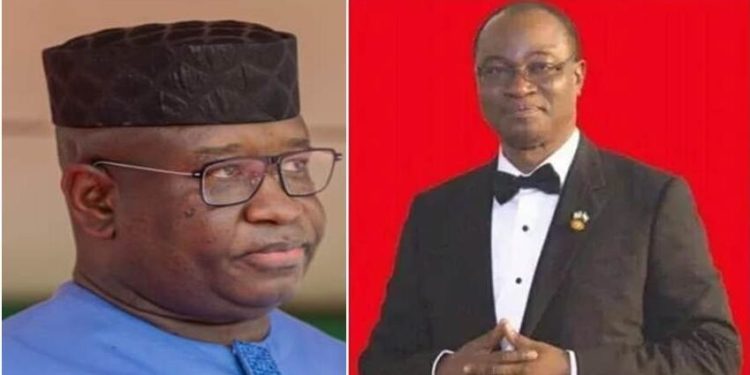By Mackie M. Jalloh
The political climate in Sierra Leone remains fraught with tension, as the ongoing rivalry between the All People’s Congress (APC) and the Sierra Leone People’s Party (SLPP) deepens. While political confrontations between ruling and opposition parties are not uncommon, the current dynamics between these two powerhouses have taken on a particularly intense and potentially destabilizing form. Political scientist Edwin Macauley, from the University of Vancouver, has analyzed the situation, warning of a “political infections fever” that threatens to further divide the nation.
Rather than a conventional political contest, Macauley characterizes the discord between the APC and SLPP as an entrenched conflict with ramifications beyond the immediate political arena. He points out that this rivalry, which has seeped into both public discourse and institutional interactions, reflects a deeper struggle for dominance that could undermine the nation’s stability.
According to Macauley, the SLPP, currently in power, has managed to maintain a semblance of constitutional legitimacy, often dismissing the APC’s criticisms as the actions of a party that has lost its grip on power. The ruling party’s confidence is bolstered by its control of key state institutions, which has allowed it to sidestep opposition challenges with relative ease. On the other hand, the APC has been relentless in its efforts to undermine the SLPP, frequently accusing the judiciary of bias and claiming that the political system is rigged against them.
These allegations, Macauley notes, are not without consequence. The APC’s vocal opposition and repeated challenges have escalated tensions, particularly during critical moments such as election cycles. One incident that stands out is the reversal of a decision by the Tripartite Committee, which initially seemed to favour the APC. This unexpected turn of events has been emblematic of the unpredictable and often volatile nature of Sierra Leone’s political landscape. For Macauley, this reversal is a stark reminder of the complexities involved in navigating the country’s political system, where strategic maneuvering by both parties can have far-reaching implications.
In analyzing the APC’s strategies, Macauley suggests that the party’s increasingly desperate attempts to regain power are indicative of a broader issue. The APC, he argues, is struggling to adapt to a new political reality where the SLPP’s narrative of progress and stability is gaining traction among the electorate. This desperation is evident in the APC’s approach, which has often been reactive rather than proactive, focusing on criticizing the SLPP rather than presenting a clear alternative vision for the country.
Meanwhile, the SLPP has capitalized on its incumbency, focusing on showcasing its achievements and progress in governance. This strategy has allowed the party to project an image of stability and continuity, which resonates with voters who prioritize economic and social development. However, Macauley warns that this apparent comfort could be misleading. The underlying tensions between the two parties are more complex than they appear, with factors such as regional loyalties, economic disparities, and historical grievances playing a significant role in shaping the political landscape.
As Sierra Leone approaches its next electoral cycle, the stakes are high. The ongoing friction between the APC and SLPP not only shapes the current political discourse but also raises critical questions about the country’s future. Will the SLPP’s focus on stability and progress be enough to maintain its hold on power, or will the APC’s relentless opposition find resonance with a populace eager for change? Macauley’s analysis suggests that the answer lies in how both parties navigate the coming months, particularly in their engagement with key issues such as governance, the economy, and national unity.
For Sierra Leoneans at home and abroad, the political standoff between the APC and SLPP is more than just a battle for power; it is a contest that will determine the direction of the country’s future. As the two parties continue to clash, the potential for either reconciliation or further division remains an open question, with significant implications for Sierra Leone’s long-term stability and development.












